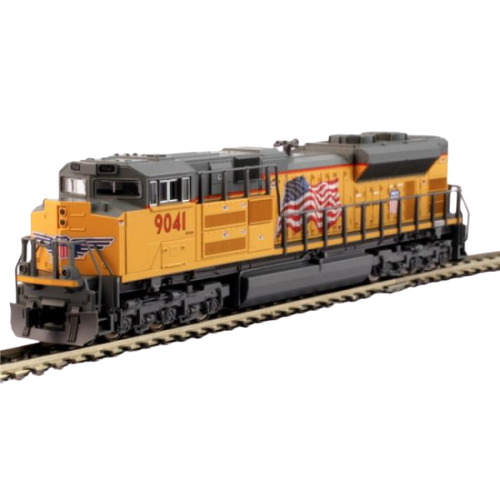
Going to increase your collection of trains or very much interested in giving a train as something special? Model Train Fun is where to shop for your model teach needs. We have a great selection of different types of trains including electric trains, diesel trains, locomotives, freight trains, passenger trains, and wooden trains. All you need to do is select which suits you the best from the thousands of trains available at Model Train Fun.
Purchase Private Car membership Ready to climb aboard Model Train Fun? Once you're ready, click below! Purchase Now! https://modeltrainfun.us/
Scale
First, it’s useful to understand what scale refers to. Scale refers to the amount of times the train has been scaled down from its actual size. An HO scale train, for example, is 1/87 the size of an real train. The gauge, on the other hand, is certainly a separate term from its scale, and refers to the width between the inside running edges of the track. Model train scales are vital that you know if you are serious about this pursuit.
All model trains are made to one of the many common scales designed in proportion to real trains. For example, HO scale designs are 1/87th the size of the real thing, while the much larger G scale models are 1/25th the size of an actual train and tiny N gauge models are just 160/th the size of an actual train. If you buy a model train set at a particular gauge, everything in the set-trains, tracks, and accessories-are usually all made on the same scale.
While there are Japanese model railway manufacturers that export their products to other parts of the world and follow the scale standards of the export destinations, in Japan you can find several domestic scales which are popular in the country but virtually unknown elsewhere. International NEM and NMRA scales are also used by some Japanese modellers. The main reason for the domestic scales different from international standards is the smaller prototype loading gauge and unusual gauges of Japanese railways: 600 mm (1 ft 11+5⁄8 in), 762 mm (2 ft 6 in) and 1,067 mm (3 ft 6 in) are utilized, along with standard gauge of 1 1,435 mm (4 ft 8+1⁄2 in).
At the turn of the last century, Lionel was the first to produce electric toy trains in America in what they called “Standard Gauge,” where the rails were 2.125″ apart. After the first World War, the smaller O scale (1:48) became the popular size for toy train manufacturers in the us. Many toy train sets run on three-rail track, which allows for complex track layouts to be built without complicated electrical wiring. Lionel continues to make O scale trains and accessories, plus a number of other manufacturers like Atlas, MTH, and Williams.
Today, however, there are more options. A few of the higher-end sets from Bachmann, Athearn, and Atlas include a larger and much more reliable power supply. Lionel now includes only a basic power supply but a radio control with multiple sound controls in even their most basic sets.
When running your electric model train, the most common setup would be to connect two wires to your track. The current run-up one wire and track to the train, then back down the other side, forming a loop.
What Type of Track Is Best?
Regular tracks have always been built to standards developed by the National Model Railroad Association which ensured they would work with each other. Today, however, most N, HO and O-train sets include "integrated roadbed track." This is a track with an elevated molded plastic base that represents the ties and ballast. Each manufacturer has developed their own line and calls this sort of track by their own trade name. This newer type of monitor is well suited for beginners, especially younger modelers and temporary layouts, even on carpeted floors. Along with providing a more realistic foundation, the roadbed elevates the track above the flooring and provides an additional locking mechanism to hold the sections together. The only disadvantage of these monitor systems over conventional track pieces is that they are not universally compatible. Because of patents with the new style, each manufacturer has had to make their own track system, plus they are not appropriate for each other. Thwill be is something to take into account if you plan to expand your track later. Some manufacturers have very extensive track lines that produce building a large layout possible, others only offer a few basic pieces. Atlas HO track is actually designed with a removable base so you can easily convert it to complement conventional tracks. You can also use cork roadbed to make transitions to other brands.
If you’re on this page, chances are good you already have a rough idea what model trains and model railroads are. But for the uninitiated, they’re small, life-like versions of real trains that hobbyists build detailed tracks for.
Despite the age of the model train hobby, it remains as popular as ever today since it did when it first began. From classic steam locomotives like the C57 to the more modern electric locomotives, train kits have something to offer everyone. We hope the above info helps you choose your next model train project - make sure to share your progress around on our social media channels!
Today, however, there are more options. A few of the higher-end sets from Bachmann, Athearn, and Atlas include a larger and much more reliable power. Lionel now includes only a basic power supply but a radio control with multiple sound controls in even their most basic units.
FUN FALL SEASON SPECIAL DEAL STOREWIDE! 20% OFF. Valid on Sales of $125 plus FREE SHIPPING. Use PROMOTION CODE: FUNSALE
No comments:
Post a Comment